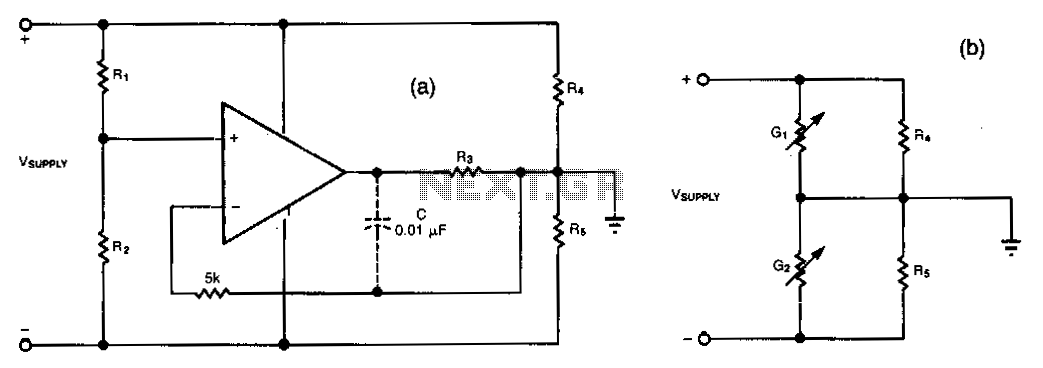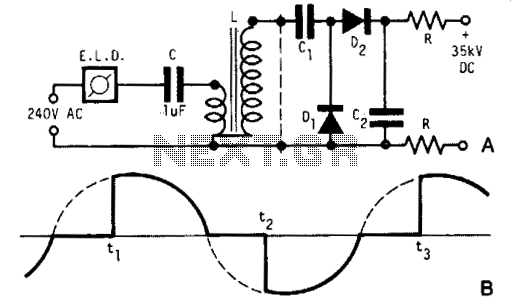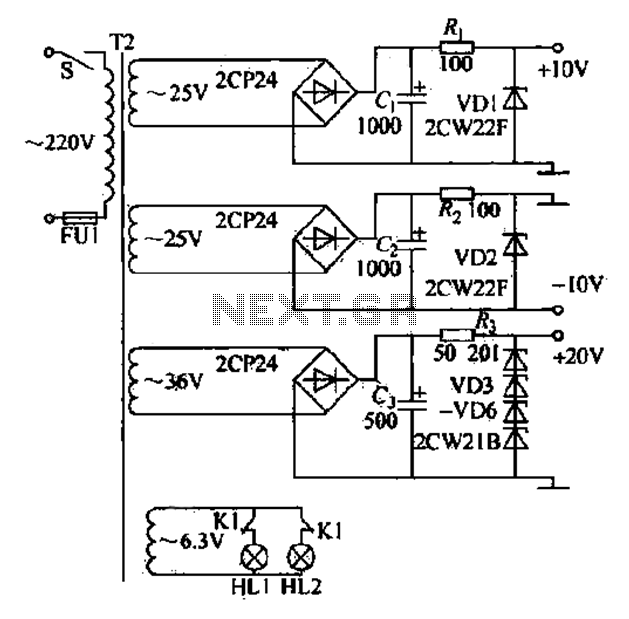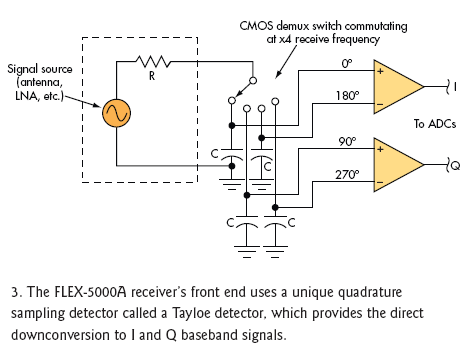
12V Regulated Inverter Supply
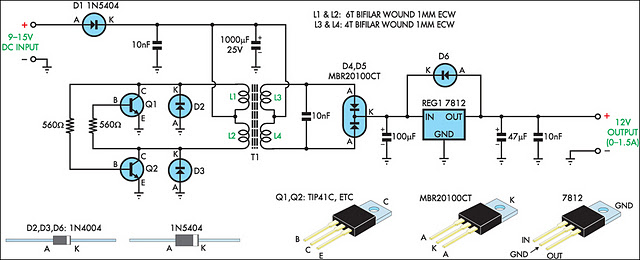
When operating 12V electronic devices from lead-acid battery banks, the voltage supplied to the appliance can fluctuate significantly, ranging from below 11V with discharged batteries to over 14V during charging. Many appliances cannot tolerate such wide voltage variations, which may lead to poor performance or damage. A solution to this issue is a step-up inverter combined with a 12V fixed regulator. Q1 and Q2, along with a ferrite pot-core transformer, form a DC-to-AC inverter. The transformer’s turns ratio reduces the input voltage by approximately 30%. The square wave output voltage is rectified and combined with the input DC voltage. The increased DC voltage is then supplied to a 7812 12V regulator (REG1), which can deliver 1.5A at 12V output from any input voltage between 9V and 15V, with the inverter compensating for any shortfall. Current requirements are minimized by not having the inverter supply the total current. By using a higher-rated linear regulator, the circuit can easily provide up to 5A. The transistors utilized can be general-purpose power types, while the twin diodes (D4/D5) should be high-speed devices typically found in outdated computer power supplies. Standard rectifier diodes can be used, although this may lead to a slight reduction in efficiency. The same applies to diodes D2 and D3. D6 acts as a protection diode, and any 3A type will suffice. With minor adjustments to the turns ratio and the substitution of the linear regulator, it is possible to operate 24V devices from a 12V supply. Additionally, laptops requiring around 18V can also be powered. The diagram illustrates the transformer winding process, where L1 and L2 consist of six turns bifilar wound with 1mm-diameter enameled copper wire, while L3 and L4 are bifilar wound with four turns.
The circuit employs a step-up inverter design to ensure stable voltage output for sensitive electronic devices powered by lead-acid battery banks. The inverter uses two transistors (Q1 and Q2) configured in a push-pull arrangement to generate a square wave AC signal from the DC input. The ferrite pot-core transformer is crucial for stepping up the voltage; its turns ratio is engineered to optimize the output voltage while maintaining efficiency.
The output from the transformer is rectified using diodes D4 and D5, allowing the AC signal to be converted back into a DC signal. This rectified voltage is then combined with the input voltage to create a higher DC voltage that is fed into the 7812 voltage regulator. The 7812 regulator is a linear voltage regulator that maintains a steady 12V output, capable of delivering up to 1.5A. When higher current is required, a more robust linear regulator can be substituted without significant redesign, allowing the circuit to accommodate loads up to 5A.
Diodes D2 and D3 serve to protect the circuit from reverse voltage conditions, while D6 is a protection diode that prevents potential damage to the regulator and the connected load. The design also allows flexibility in the output voltage levels. By modifying the transformer’s turns ratio and selecting an appropriate linear regulator, the circuit can be adapted to power devices requiring 24V or other voltage levels, such as laptops needing approximately 18V.
The winding of the transformer is critical for the performance of the inverter. The bifilar winding technique used for L1, L2, L3, and L4 ensures that the inductance is balanced, which is essential for effective operation. The use of 1mm-diameter enameled copper wire is specified to handle the current requirements while minimizing resistive losses.
Overall, this circuit design provides a reliable method for powering 12V electronic devices from lead-acid batteries, addressing the issues of voltage fluctuation and ensuring compatibility with a range of appliances.When running 12V electronic devices from lead-acid battery banks, the voltage to the appliance can vary from below 11V with discharged batteries, to well above 14V during charging. Many appliances will not tolerate such a wide fluctuation and may perform poorly or be damaged. This step-up inverter, combined with a 12V fixed regulator, is a good so lution. Q1 & Q2, together with the ferrite pot-core transformer, comprise a DC-to-AC inverter. The turns ratio steps down the input voltage by about 30%. The square wave output voltage is rectified and added to the input DC voltage. The stepped up DC is then fed to a 7812 12V regulator (REG1). The specified regulator will supply 1. 5A at 12V out, from any input into the inverter between 9V and 15V, with the inverter making up the shortfall. Current requirements are kept to a minimum by not having the inverter supplying the total current. By substituting a higher rated linear regulator, up to 5A can easily be supplied by this simple circuit.
The transistors can be almost any general-purpose power type while the twin diode (D4/D5) is a high-speed device commonly found in defunct computer power supplies. Normal rectifier diodes can be used with a slight decrease in efficiency. The same comment applies to D2/D3. D6 is a protection diode and any 3A type will be suitable. By slightly modifying the turns ratio, and substituting the linear regulator, 24V devices can be operated from a 12V supply.
Laptops requiring around 18V can be powered as well. This diagram shows how to wind the transformer. L1 & L2 are six turns bifilar wound using 1mm-diameter enameled copper wire, while L3 & L4 are four turns bifilar wound. 🔗 External reference
The circuit employs a step-up inverter design to ensure stable voltage output for sensitive electronic devices powered by lead-acid battery banks. The inverter uses two transistors (Q1 and Q2) configured in a push-pull arrangement to generate a square wave AC signal from the DC input. The ferrite pot-core transformer is crucial for stepping up the voltage; its turns ratio is engineered to optimize the output voltage while maintaining efficiency.
The output from the transformer is rectified using diodes D4 and D5, allowing the AC signal to be converted back into a DC signal. This rectified voltage is then combined with the input voltage to create a higher DC voltage that is fed into the 7812 voltage regulator. The 7812 regulator is a linear voltage regulator that maintains a steady 12V output, capable of delivering up to 1.5A. When higher current is required, a more robust linear regulator can be substituted without significant redesign, allowing the circuit to accommodate loads up to 5A.
Diodes D2 and D3 serve to protect the circuit from reverse voltage conditions, while D6 is a protection diode that prevents potential damage to the regulator and the connected load. The design also allows flexibility in the output voltage levels. By modifying the transformer’s turns ratio and selecting an appropriate linear regulator, the circuit can be adapted to power devices requiring 24V or other voltage levels, such as laptops needing approximately 18V.
The winding of the transformer is critical for the performance of the inverter. The bifilar winding technique used for L1, L2, L3, and L4 ensures that the inductance is balanced, which is essential for effective operation. The use of 1mm-diameter enameled copper wire is specified to handle the current requirements while minimizing resistive losses.
Overall, this circuit design provides a reliable method for powering 12V electronic devices from lead-acid batteries, addressing the issues of voltage fluctuation and ensuring compatibility with a range of appliances.When running 12V electronic devices from lead-acid battery banks, the voltage to the appliance can vary from below 11V with discharged batteries, to well above 14V during charging. Many appliances will not tolerate such a wide fluctuation and may perform poorly or be damaged. This step-up inverter, combined with a 12V fixed regulator, is a good so lution. Q1 & Q2, together with the ferrite pot-core transformer, comprise a DC-to-AC inverter. The turns ratio steps down the input voltage by about 30%. The square wave output voltage is rectified and added to the input DC voltage. The stepped up DC is then fed to a 7812 12V regulator (REG1). The specified regulator will supply 1. 5A at 12V out, from any input into the inverter between 9V and 15V, with the inverter making up the shortfall. Current requirements are kept to a minimum by not having the inverter supplying the total current. By substituting a higher rated linear regulator, up to 5A can easily be supplied by this simple circuit.
The transistors can be almost any general-purpose power type while the twin diode (D4/D5) is a high-speed device commonly found in defunct computer power supplies. Normal rectifier diodes can be used with a slight decrease in efficiency. The same comment applies to D2/D3. D6 is a protection diode and any 3A type will be suitable. By slightly modifying the turns ratio, and substituting the linear regulator, 24V devices can be operated from a 12V supply.
Laptops requiring around 18V can be powered as well. This diagram shows how to wind the transformer. L1 & L2 are six turns bifilar wound using 1mm-diameter enameled copper wire, while L3 & L4 are four turns bifilar wound. 🔗 External reference
